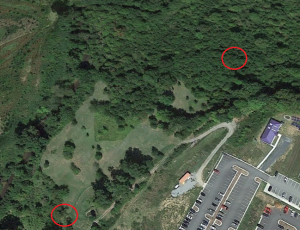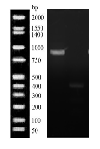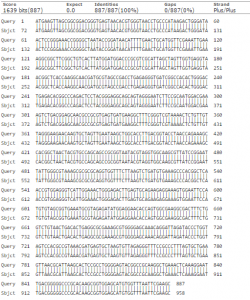Bacillus cereus is a Gram-positive, rod-shaped, aerobic, motile, beta hemolytic bacterium commonly found in soil and food.
Reference:
- Been, M. De. “Comparative analysis of two-component signal transduction systems of Bacillus cereus, Bacillus thuringiensis and Bacillus anthracis.” Microbiology 152.10 (2006): 3035-048. Web.
Date collected: February 8, 2017
Methods for isolation and identification:
- Collection and Sampling of Environmental Samples at Environmental Education Center (Figure 1)
- Selection of bacteria from plate to be analyzed (Figure 2)
- Polymerase Chain Reaction to amplify 16S rRNA
- Restriction Enzyme Digestion & Gel Electrophoresis (Figure 3)
- DNA Sequencing Analysis/Identification

Figure 1. Sampling site locations in Lancer Park. The top site is Buffalo Creek and the lower site is the pond where samples were taken

Figure 2: picture of Bacillus cereus
Results:
- MspI digestion (Figure 3): A 1,500 bp product was amplified by PCR. Upon digestion with a band at 500 bp digested and a 1000 bp undigested.

Figure 3: Mspi digestion of Bacillus cereus PCR product
- Sequence analysis (Figure 4): The sequenced PCR product generated 887 bases. NCBI BLAST analysis revealed 99% identity with 887 of the bases matching the 16s rRNA gene of Bacillus cereus (Figure 4).

- Figure 4: The BLAST sequence match of the sample bacteria to Bacillus cereus
Contributed by: Matthew W. Bowman & Carly Carter, BIOL 250 – Spring 2017, Longwood University